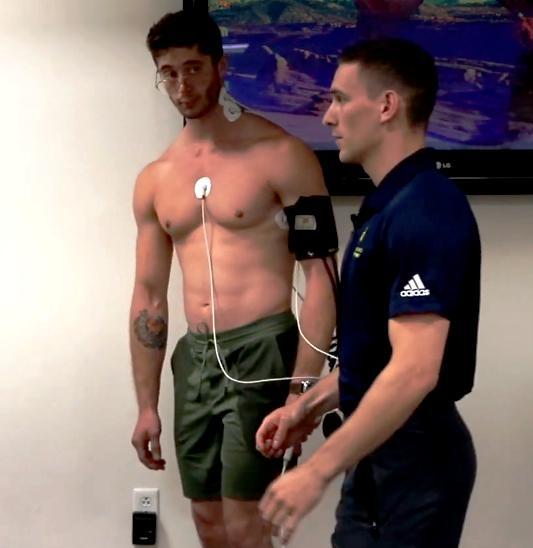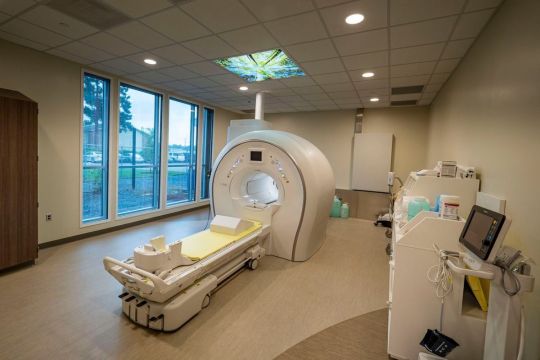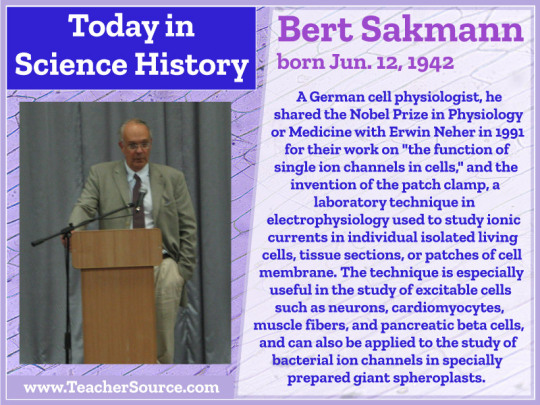#Electrophysiology
Text
Embarking on a Scholarly Expedition: Unraveling the Electric Tapestry of the Heart's Symphony ⚡️💓
Greetings, inquisitive minds! Today, I invite you to join me on a deep dive into the intricacies of the heart's electric system – a symphony conducted by an ensemble of specialized cells, choreographing the rhythm of life itself. 📚🔬
1. The Sinoatrial (SA) Node: The Maestro of the Orchestra
Our exploration commences with the illustrious SA node, a cluster of cells nestled elegantly in the right atrium. As the heartbeat's maestro, the SA node plays a pivotal role in initiating the electric impulse. Picture this natural pacemaker as the conductor, setting the tempo for the graceful dance of atrial contraction.
2. Atrioventricular (AV) Node and the Bundle of His: The Harmonious Transition
Moving seamlessly through our cardiac composition, we encounter the AV node – a bridge connecting the atria to the ventricles. This crucial junction ensures a harmonious transition, much like the bridge between movements in a musical masterpiece. Following this, the electric wave traverses the Bundle of His, a specialized pathway conducting the impulse with precision.
3. Ventricular Contraction: The Grand Crescendo
In the grand finale, our symphony reaches its pinnacle as the ventricles contract in orchestrated unison. This powerful crescendo propels blood throughout the circulatory system, marking the culmination of the heart's electric ballet.
As aspiring scholars, let's delve into these references, unraveling the secrets of this physiological masterpiece. Envision the heart's electric symphony, appreciate the precision required for this grand performance, and together, let's celebrate the wonders of medical science! 💡🧠🎓

#science#biology#college#education#school#student#medicine#doctors#health#healthcare#electrophysiology#physiology#nursing
18 notes
·
View notes
Text

the muscle guy is volunteering for some electrode action
58 notes
·
View notes
Video
undefined
tumblr
Light-activated Bacteria
Neuroscientists have had the monopoly on using light-activated proteins to induce electrical impulses in cells. This ability to control cell firing at the flick of a switch has revolutionised research into the brain, but brain cells are not the only electrical cells in nature. It’s understood, for example, that changes in microbial cell electrophysiology regulate all sorts of processes including spore production, biofilm formation and susceptibility to antibiotics. With this in mind, researchers have now adapted tools previously used in neurons for use in bacteria. The bacteria in the video contain such photoswitch proteins and, when exposed to light for 10 seconds (every 10 minutes), become negatively charged (hyperpolarised) – seen as a pulse of blue colour. As a proof-of-concept experiment, these flashing bacteria open the door for research into various aspects of microbial electrophysiology and pave the way for developing synthetic bacteria whose functions can be controlled by light.
Written by Ruth Williams
Video from work by Tailise Carolina De Souza-Guerreiro and colleagues
School of Life Sciences, University of Warwick, Coventry, UK and Center for Nanoscience and Technology, Istituto Italiano di Teconologia, Milano, Italy
Video originally published with a Creative Commons Attribution 4.0 International (CC BY 4.0)
Published in Advanced Science, January 2023
You can also follow BPoD on Instagram, Twitter and Facebook
22 notes
·
View notes
Text
just had my first electrophysiology appointment and they confirmed everything again, started me on meds, AND referred me for testing for a disorder with high comorbidity to mine!!
feeling so so hopeful 🥰
#lexi talks#personal blog#stoner witch#southern witch#pagan witch#witchcraft#paganism#paganblr#queer pagans#pagan#potsie#pots syndrome#electrophysiology#heds#ehlers danlos syndrome#hypermobility
4 notes
·
View notes
Text
Electrophysiology Market: Transforming Cardiac Care with Advanced Diagnostics
The Electrophysiology market is witnessing significant growth as cardiovascular diseases (CVDs) continue to be a leading cause of mortality worldwide. With advancements in diagnostic technology, electrophysiology is revolutionizing cardiac care by enabling precise diagnosis and treatment of heart rhythm disorders. This article explores the key market trends, segmentation, growth drivers, and leading companies shaping the electrophysiology industry.
Market Overview
According to SkyQuest’s Electrophysiology Market report, the market is currently valued at USD 8.20 billion in 2023, with a projected CAGR of 13%. The increasing prevalence of heart diseases, growing adoption of minimally invasive procedures, and advancements in electrophysiology devices are propelling the market forward.
Request Your Free Sample: - https://www.skyquestt.com/sample-request/electrophysiology-market
Market Segmentation
By Product Type:
Electrophysiology Ablation Catheters: Key devices for treating arrhythmias through minimally invasive procedures.
Electrophysiology Diagnostic Catheters: Widely used in diagnosing electrical activity in the heart.
Electrophysiology Lab Devices: Includes mapping systems and recording devices for advanced diagnostics.
Pacemakers and Defibrillators: Crucial for regulating heart rhythms in patients with severe arrhythmias.
Others: Includes specialized tools and equipment for electrophysiological procedures.
By Indication:
Atrial Fibrillation: One of the most common cardiac arrhythmias, where electrophysiology plays a significant role in treatment.
Atrioventricular Nodal Reentrant Tachycardia (AVNRT): A fast heart rhythm disorder often treated with ablation.
Wolff-Parkinson-White Syndrome (WPW): A rare condition where electrophysiology diagnostics are essential for management.
Other Arrhythmias: Includes ventricular tachycardia and flutter, both addressed through electrophysiology treatments.
By End-User:
Hospitals: Major centers for electrophysiology procedures and treatments.
Ambulatory Surgical Centers: Increasingly adopting electrophysiology for outpatient treatments.
Cardiac Centers: Specialized in diagnosing and treating heart rhythm disorders.
Others: Includes research institutions and academic centers focused on cardiac care.
Key Growth Drivers
Rising Incidence of Cardiovascular Diseases: The global rise in heart diseases is fueling demand for advanced electrophysiology diagnostics and treatments.
Technological Advancements: Innovations in catheter ablation, 3D mapping systems, and minimally invasive procedures are enhancing the market's growth potential.
Growing Preference for Minimally Invasive Surgeries: Electrophysiology procedures are less invasive, leading to faster recovery times, which is driving their adoption.
Increased Healthcare Spending: Governments and healthcare providers are investing heavily in cardiac care, boosting the demand for electrophysiology solutions.
Read More at: - https://www.skyquestt.com/report/electrophysiology-market
Leading Companies in the Market
SkyQuest’s report highlights key players dominating the Electrophysiology Market, including:
Johnson & Johnson
Abbott Laboratories
Medtronic PLC
Boston Scientific Corporation
Siemens Healthineers AG
MicroPort Scientific Corporation
Biotronik SE & Co. KG
GE Healthcare
Koninklijke Philips N.V.
Biosense Webster, Inc.
Take Action Now: Secure Your Report Today - https://www.skyquestt.com/buy-now/electrophysiology-market
Challenges and Opportunities
High costs associated with electrophysiology procedures and devices pose a challenge, especially in developing regions. However, the ongoing research and development efforts to create cost-effective and advanced devices offer vast opportunities for market growth. The increasing availability of mobile healthcare services and remote diagnostics also opens new avenues for expansion.
Future Outlook
The Electrophysiology Market is poised for continued growth, driven by technological advancements and the increasing burden of cardiovascular diseases globally. Companies that focus on developing innovative and cost-effective solutions are well-positioned to capitalize on the growing demand for electrophysiology procedures.
As the need for effective cardiac care intensifies, the electrophysiology market is at the forefront of diagnostic and treatment innovations. Healthcare providers and decision-makers must stay updated with the latest trends and technologies to ensure optimal patient outcomes. For a detailed analysis and strategic insights, consult SkyQuest's comprehensive Electrophysiology Market report.
0 notes
Text
Service Dogs Lead to Fewer Seizures in Resistant Epilepsy
New Post has been published on https://petn.ws/j5cN2
Service Dogs Lead to Fewer Seizures in Resistant Epilepsy
Working with medically trained service dogs is associated with a 31% reduction in seizures compared with usual care in treatment-resistant epilepsya new study showed. Investigators speculate that the dogs may ease participants’ stress, leading to a decrease in seizure frequency, although they note this relationship warrants more study. “Despite the development of numerous antiseizure medications […]
See full article at https://petn.ws/j5cN2
#DogNews #AnxietyDisorder, #Electrophysiology, #Epilepsy, #HealthRelatedQualityOfLife, #Hrqol, #MedicalLife, #MedicalLifestyle, #MedicalStudentLifestyle, #NurseLifestyle, #PhysicianLifestyle, #QOL, #QualityOfLife, #ResidentLifestyle, #SeizureDisorder, #Seizure, #Stress, #WoundCare, #WoundManagement
#anxiety disorder#electrophysiology#epilepsy#health related quality of life#hrqol#medical life#medical lifestyle#medical student lifestyle#nurse lifestyle#physician lifestyle#QOL#quality of life#resident lifestyle#seizure disorder#seizure.#stress#wound care#wound management#Dog News
0 notes
Text
#Electrophysiology Market#Electrophysiology#Electrophysiology Market trends#Electrophysiology Market size#Electrophysiology Market growth
0 notes
Text
Electrophysiology Market Size, Trends, Revenue Share Analysis, Forecast, 2030
The electrophysiology market refers to the medical field and industry focused on the study and treatment of electrical activities in the body, particularly within the heart and nervous system. Electrophysiology is a branch of physiology that deals with the electrical properties of biological cells and tissues. In the medical context, it primarily involves the diagnosis and treatment of various cardiac arrhythmias, which are irregular heart rhythms.
𝐃𝐨𝐰𝐧𝐥𝐨𝐚𝐝 𝐒𝐚𝐦𝐩𝐥𝐞 𝐑𝐞𝐩𝐨𝐫𝐭 https://www.alliedmarketresearch.com/request-sample/452
Here are some key aspects of the electrophysiology market:
Diagnostic Procedures: Electrophysiology procedures are used to diagnose and locate abnormal electrical activity in the heart or nervous system. These procedures can help identify conditions such as atrial fibrillation, ventricular tachycardia, and epilepsy.
Catheter Ablation: Ablation procedures involve the use of catheters to deliver controlled energy (usually radiofrequency or cryoablation) to destroy or modify abnormal electrical pathways in the heart. This helps in treating arrhythmias and restoring normal heart rhythms.
Device Implantation: The electrophysiology market also includes the implantation of devices like pacemakers, implantable cardioverter-defibrillators (ICDs), and cardiac resynchronization therapy (CRT) devices to manage and regulate heart rhythms.
Technological Advancements: The field of electrophysiology is continually evolving with advancements in technology, such as 3D mapping systems, advanced catheters, and robotic-assisted procedures, making these procedures safer and more effective.
Market Growth: The electrophysiology market has been experiencing steady growth due to the increasing prevalence of cardiovascular diseases and the aging population. There's also a growing demand for minimally invasive procedures, which electrophysiology techniques often provide.
Get Detailed Report https://www.alliedmarketresearch.com/electrophysiology-devices-market
0 notes
Text
#Cardiac Ablation#Minimally Invasive Surgery#Heart Health#Arrhythmia Treatment#Electrophysiology#Heart Rhythm#heart rhythm disorders#Cardiology#Heart Disease#Heart Care
1 note
·
View note
Text

volunteering for electrophysiology experiments.
26 notes
·
View notes
Text
I see what you did there…a (very) brief history of imaging the brain: blood, BOLD and fMRI
A little more #neuro #science #history
This time: functional magnetic resonance imaging #fMRI #BOLD
#scicomm #writing #blogging #neuroscience #brain
For many patients we can discover – or discount – physical causes of neurological problems ‘in real time’ with a range of imaging and other measurement techniques. Neuroimaging techniques are mainly children of the 20th century, and their development is ongoing in the 21st, but their roots stretch back through the 19th century. For example, photography and its ability to reproduce an enduring…

View On WordPress
#Angelo Mosso#CT#EEG#electrophysiology#epilepsy#fMRI#heamodynamics#Keith Thulborn#MEG#MRI#neuroimaging#neurology#neuroskeptic#neurovascular coupling#PET#Peter Bandettini#Seiji Ogawa#xkcd#Your Brain through...History
1 note
·
View note
Text
Uh oh! Looks like our friend is here! Everybody say hi to Tight, Squeezing Chest Pain!!!
0 notes
Text
0 notes
Text

Experience Excellence in Interventional Cardiology & Electrophysiology With Dr. Nityanand Tripathi. Trust expertise for heart health.
For More Information:
Visit:- https://lnkd.in/dqmd_aAC
Location:- https://lnkd.in/gyKEEVCF
#HeartHealth#InterventionalCardiology#Electrophysiology#CardiovascularExpertise#TrustedCardiologist#PatientCenteredCare#HeartWellness#CardiacInterventions#CardiacElectrophysiology#CardiovascularSpecialist
0 notes
Photo

Bert Sakmann was born on June 12, 1942. A German cell physiologist, he shared the Nobel Prize in Physiology or Medicine with Erwin Neher in 1991 for their work on "the function of single ion channels in cells," and the invention of the patch clamp, a laboratory technique in electrophysiology used to study ionic currents in individual isolated living cells, tissue sections, or patches of cell membrane. The technique is especially useful in the study of excitable cells such as neurons, cardiomyocytes, muscle fibers, and pancreatic beta cells, and can also be applied to the study of bacterial ion channels in specially prepared giant spheroplasts.
#bert sakmann#patch clamp#inventors#physiology#electrophysiology#Nobel Prize#nobel prize winners#science#science history#science birthdays#on this day#on this day in science history
0 notes